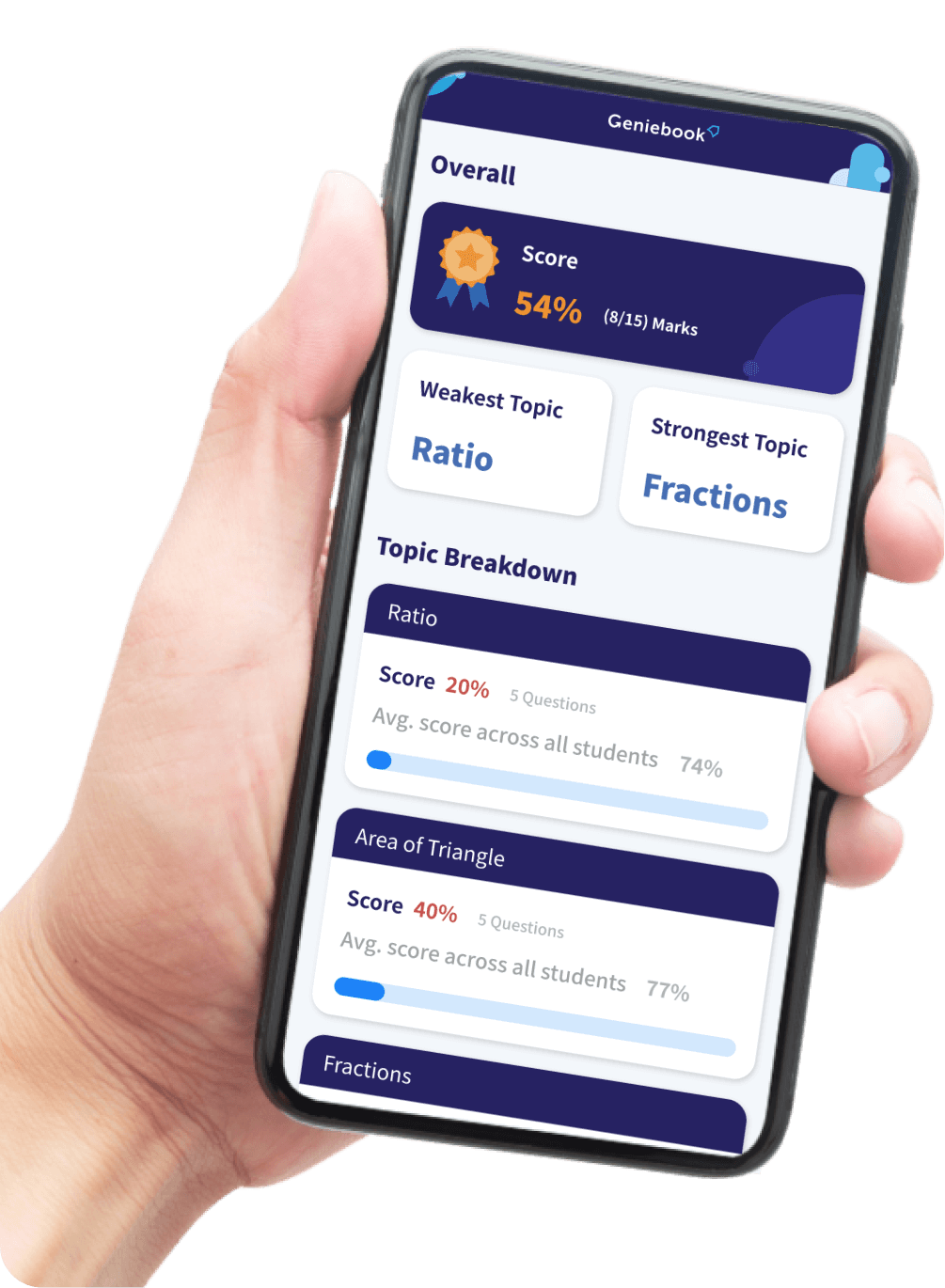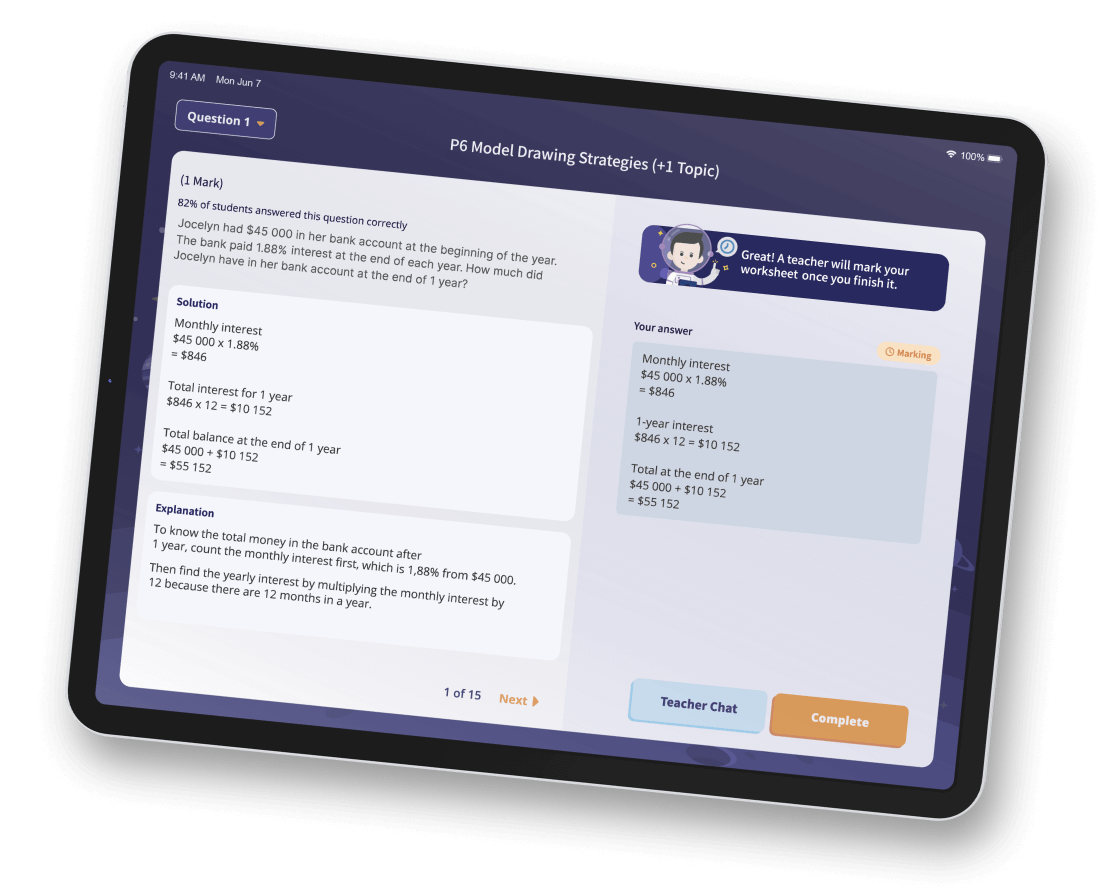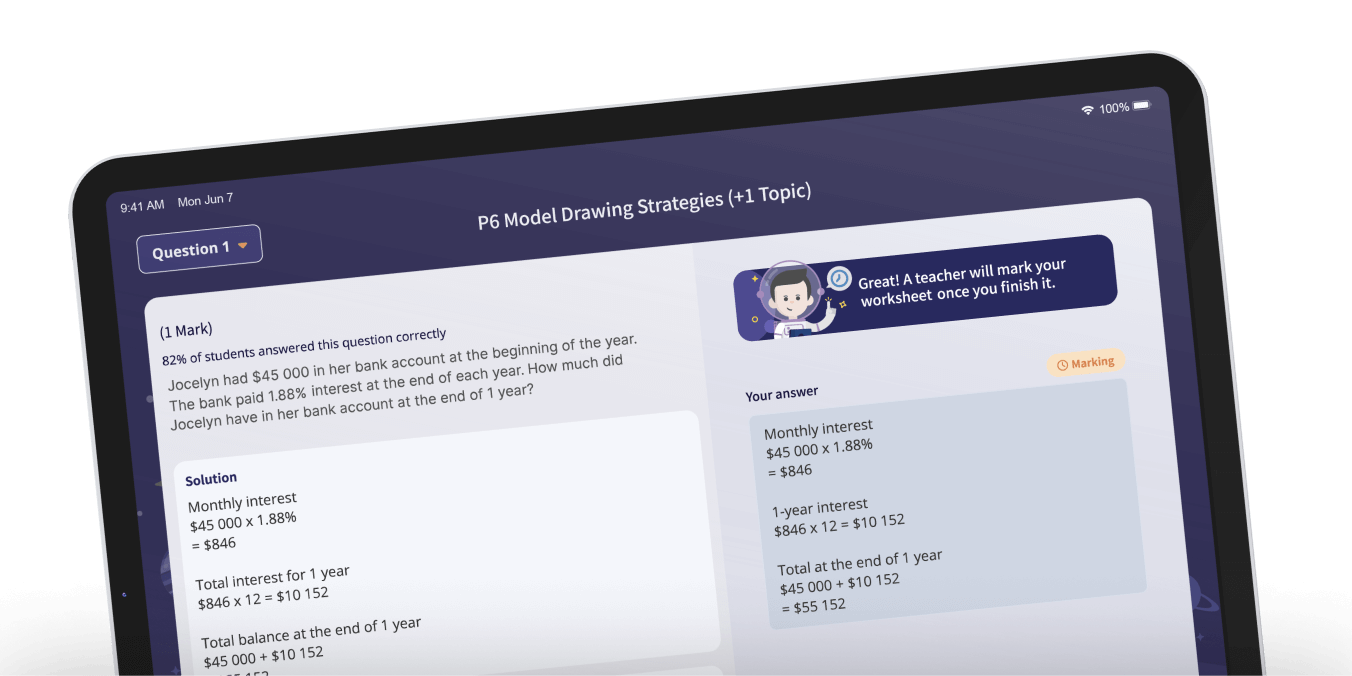Primary 5 Maths
The primary 5 Mathematics syllabus is broadly divided into 3 categories: Numbers and Algebra, Measurements and Geometry, and Statistics. Students will work with a wider range of numbers (up to 10 million) and be introduced to more advanced concepts such as the properties of a parallelogram, an isosceles triangle, and so on. Topics such as percentage, ratio, rate, average, and volume of cube & cuboid are also introduced at this stage of the learning journey.
Download Exam Papers
Click here for free Primary 5 Maths exam papers!
Strategies For Teaching Primary 5 Mathematics
When teaching Primary 5 Mathematics, it is important to provide a variety of learning activities. Incorporating games, real-world examples, and visual aids like diagrams can help engage the students and break down difficult concepts into more easily understandable pieces.
How to make learning Primary 5 Mathematics fun?
If learning maths is getting a little boring, take a break from assessment books and past-year papers. Consider introducing Maths card games such as “Race to 100” and educational online games. For those looking for a real challenge, check out Geniebook Arena to participate in daily quizzes and win exciting prizes.
Common challenges when teaching Primary 5 Mathematics
Primary 5 Maths can be a challenging subject for students. Having just made it through a year of transition into upper primary maths, they now have to face the pressure of PSLE preparation. Some students may find Primary 5 Maths challenging due to the more advanced concepts in the syllabus. In addition, students will also be introduced to more lengthy questions that involve larger numbers and complex intermediate steps.
Unlike in Primary 4, the lengthy word questions make drawing models a challenging task. Therefore, it’s important that students read each question carefully in its entirety. As Mathematics is a cumulative subject, students without a robust foundation may become discouraged when faced with more complex questions. To overcome this challenge, start off with simple questions and slowly progress towards more complex ones to help build their confidence. Be sure to encourage ample practice and provide timely feedback so that they can understand and correct any mistakes that have been made. To make the learning process easier for students, be sure to incorporate real-world examples whenever possible.
Frequently Asked Questions (FAQs)
What are the benefits of learning Primary 5 Maths?
Primary 5 Maths can assist with building analytical skills, problem-solving ability and logical reasoning. Furthermore, it increases mathematical competence and gives a solid base for complicated concepts in the future. Also, the incrementally complex nature of the subject is important to ensure students are prepared for the PSLE examination. Ultimately, Primary 5 Maths is an essential subject that allows students to acquire knowledge and prepare themselves for subsequent levels of study and beyond.
What are some important math topics that are covered in Primary 5?
As to the previous year, the syllabus is divided into three sections: Numbers and Algebra, Measurement and Geometry, and Statistics. Each comprises a number of topics your child will throughout the year. Under the Number and Algebra section, topics covered include whole numbers, addition and subtraction, multiplication and division, fractions, decimals, percentages, ratios, and rates. Under the Measurement and Geometry section, topics covered include area and properties of triangles, volume and cubes and cuboids, understanding angles, as well as two-dimensional shapes such as parallelogram, rhombus, and trapezium. As for Statistics, students will learn how to calculate the average of a set of data and its real-world applications.
Besides building and expanding on familiar topics, students will also be introduced to new topics and subtopics. Some examples of new topics are ratio, percentage, and rate, while examples of subtopics include proper fractions, improper fractions, mixed numbers, the volume of cube and cuboid, properties of triangles, and so on.
What resources are available for students struggling with Primary 5 Maths?
From exam papers to Youtube videos and educational game websites, the internet has a variety of resources to supplement your child’s learning. Also, check out Geniebook’s learning products, which empower every student to learn at their own pace. Be it AI-generated worksheets that come with instant solutions, or reinforcing familiar Mathematical concepts through our weekly online classes, your child gets to improve faster in less time.
Popular Searches
English | Maths | Grammar And Vocabulary | Grammar And Editing | Grammar And Comprehension | Numbers To 10 | Shapes | Addition And Subtraction Within 10 | P1 Exam Test Papers
English | Maths | Prepositions | Comprehension | Editing | Tenses / Subject-Verb Agreement | Multiplication And Division | Fractions | Volume | P2 Exam Test Papers
English | Maths | Science | Volume | Fractions | Bar Graphs | Angles | Tenses | Editing | Prepositions | Digestive System | Diversity Of Animals | Diversity Of Plants
English | Maths | Science | Comprehension | Adverbs | Adjectives | Multiplication | Decimals | Fractions | Matter | Animal Life Cycle | Light | P4 Exam Test Papers
English | Maths | Science | Pronouns: Demonstrative, Possessive & Reflexive | Verbs: Modals & Interrogatives | Synthesis & Transformation | Percentage, Fractions And Decimals | Ratio | Electrical Systems | Plant Reproduction: Structures And Pollination | P5 Exam Test Papers
English | Maths | Science | Composition Structure | Active And Passive Voice | Grammar Close & Visual Text | Algebra | Fractions Of Remainder | Interaction Of Forces: Friction | Interaction: Introduction to Force | P6 Exam Test Papers
Secondary 1 | S1 English | S1 Maths | S1 Science | Secondary 2 | S2 English | S2 Maths | S2 Science | Secondary 3 | S3 Maths | S3 Physics | S3 Chemistry | S3 E-Maths | S3 A-Maths | Secondary 4 | S4 Maths | S4 Physics | S4 Chemistry | S4 E-Maths | S4 A-Maths


 SG
SG  VN
VN 













